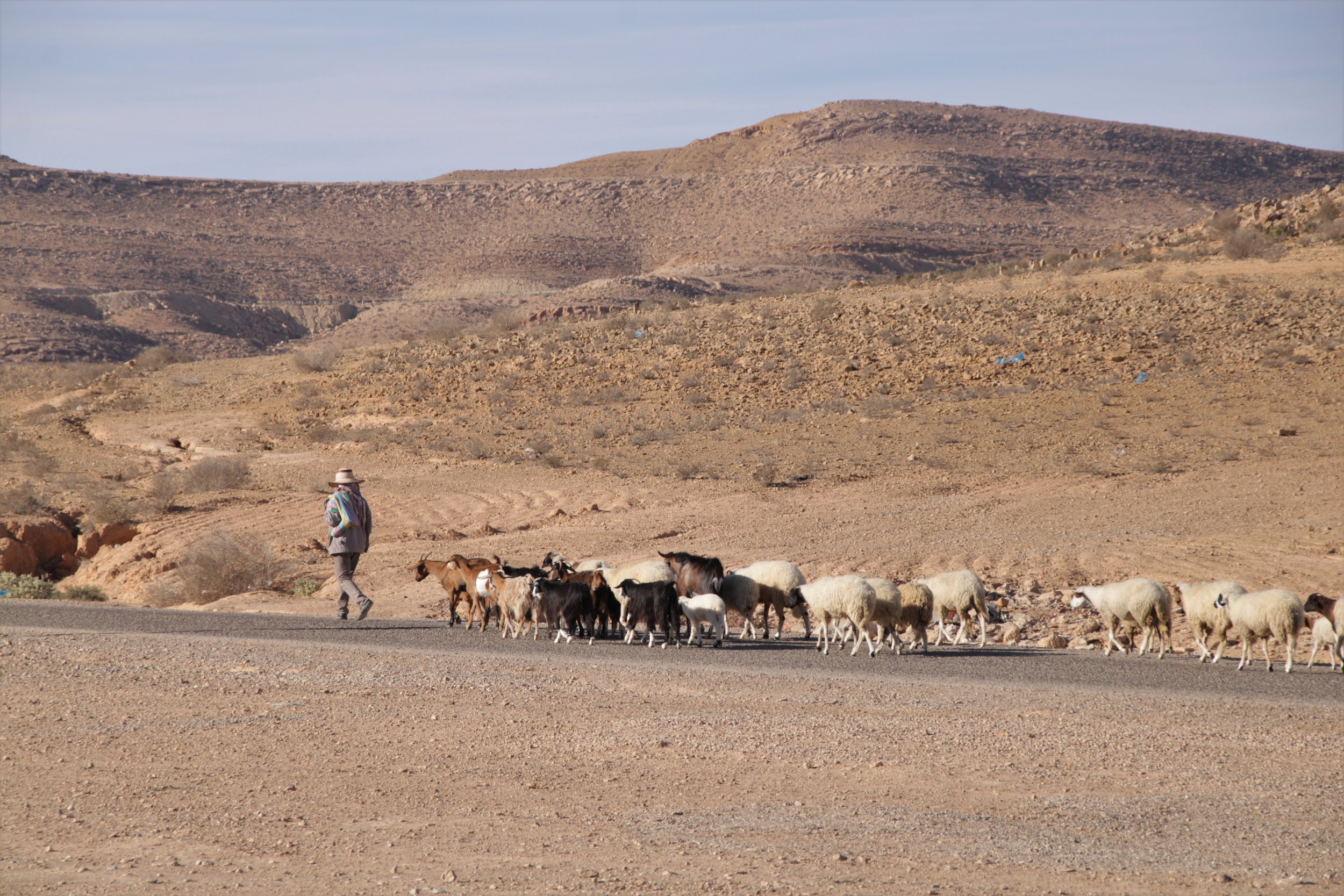I’m by no means an expert in North Africa, but as my trip in Tunisia reached a half-way point, it turned south toward the Sahara, towards a part of that greater region called the Maghreb which is so filled with beauty, adventure and hospitality as to rank in my eyes among the best destinations in North Africa. Called the Dahar, it’s a region characterized by rocky “hamada” like desert, terraced olive cultivation, high hills, and many ruins left over from various Berber tribes. The beautiful geology of the area brings crystal hunters and paleontologists looking for dinosaur fossils, as well as hosting rock art dating from 4,000 BCE. These can be found alongside quiet and friendly oasis towns, and the area was used for several scenes in Star Wars. Harmless wolves roam free, dodging the vigilance of village dogs, and every so often one passes under old hilltop Berber citadels which lay crumbling into ruin. All together, the mix of natural and cultural scenery means there’s a week’s worth of activities.
Speaking less as a tour guide, it was a really engaging experience, and I felt somewhat of a wild west component since every town had one main road running through it on which any building of note lay. Like a gunslinger walking into a saloon, buying a coffee meant parking the car, walking past all the restaurants, bakeries, the date sellers, gasoline vendors, and up to the cafe, during which time a traveler absorbs the glance of everyone. After that, in driving to and from each destination one was as likely to encounter hitchhikers as camel herders, and picking a place to camp was as easy as pulling over to the side of the road. When I first entered the area, I saw what appeared to be the classic image of a beehive, half-built, half-carved, onto the summit of a hill overlooking a valley of towns. Driving as far as the trail took me I arrived at one of these “Ksour,” or forts, that dot the landscape. Ones visible today were likely built between the 17th and 19th centuries, but some date back to Medieval times, and even to the Roman occupation. These hill-forts were used by the nomadic Berber people as refuges where all the families in a given area could fly to if invaders entered the area. Apart from that they almost always contained fortified grain silos called a Ghorfa where they could store a bountiful harvest for leaner times, actions which supported their nomadic way of life. Each family had their one silo, and they built them of sandstone and pressed mud stacked on top of each other. They are bizarre, but intensely charismatic.
PICTURED: A restored ghorfa.
There are almost 150 of these fort-granaries in the region, and many have roads that drive right up next to them, while some are still used today. Much of the region’s marginal land has been given over to olive cultivation, with some date palms mixed in. Olives have been grown in the area since the Romans were there, and groves remain with some trees that have evidence of many centuries, if not millennia of growth.
Despite the heat, sand, scorpions, snakes, night cold, and spiny plants, I love the desert and feel more at home there than in any other ecosystem. There’s something beautiful in the savagery of the environment, much the way sailors find the great power of the ocean, and its great ambilvalence, beautiful in their own way. The desert teaches you to be constantly thankful, with every hour spent under the burning sun bringing praise for the rising of the moon, and every hour in the freezing night bringing relief at the sun’s first rays. When a moonless night over so-often-unclouded skies unleashes the heaven’s full panoply, we remember how small we are, and how far we’ve come. A drink of water, a spot of shade among singing birds, and a sweet date to eat has no price tag while traveling overland in the desert. Perhaps it’s no surprise why the Arbrahamic faiths were born out of desert landscapes. It teaches humility, hospitality and gratitude, it cultivates lessons out of suffering as quickly and effectively as anything a human can do.
Dotting the landscape are numerous Zaouia, or mausoleums, of Islamic holy men. It’s not at all surprising to me to find them in this place. It’s not all together a natural landscape; humanity has left a large impact on it, and the small white or torquise buildings fit right in despite their bright colors. There are some good dates in the area, but not the best in the country. All throughout the area are villages where a few hundred dinars can fill a car trunk with wonderful things—carpets, olive oil pressed in underground mills of stone, pottery, baskets, and in Ghomrasen are famous pastry makers whose sticky, fried, almond-stuffed confectionaries are sinfully good.






